Do I need Botox?
To get the full preventative benefits of Botox, you should catch your dynamic wrinkles before they progress to static wrinkles. This typically would be around 25-30 years old but can very from person to person.
Self Test
-

Look in the mirror
1 -
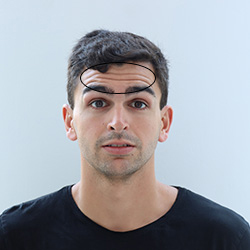
Raise your eyebrows:
Do lines form on your forehead?
2 -

Furrow your eyebrows:
Do lines form between your eyebrows?
3 -
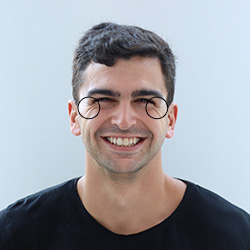
Make an exaggerated smile:
Do lines extend laterally from your eyes?
4
If answer is YES, you likely have dynamic wrinkles and could benefit from wrinkle prevention treatment to avoid them from transitioning into static wrinkles. If you have static wrinkles, Botox can help prevent them from becoming more pronounced.
Frequently Asked Questions
- As we get older our skin elasticity and collagen decrease, predisposing us to wrinkles. There are, however, causative factors that we can control, one of which are our Facial Expressions (embrace the poker face?). Each time we use a muscle, a groove forms beneath our skin’s surface. As skin ages, it can’t spring back in place as well, so the grove becomes a permanent feature of the face, and ta-dah, a wrinkle forms
- There are 2 main types of wrinkles:
- Dynamic: these form when you make a facial expression and are not there at rest
- Static: these are there all the time
- Dynamic wrinkles progress to static over time unless prevented. Think about it as a piece of paper you fold – the more times you fold and unfold it, the more permeant the crease
- Botox is a protein that relaxes muscles and as such:
- (i) decreases the appearance of static wrinkles and
- (ii) prevents dynamic wrinkles from transitioning to permeant / static ones
- Botox acts through blocking chemical signals that cause muscles to contract
- Botox is actually a trade name, and there are 4 FDA approved versions: Botox, Dysport, Xeomin, Jeuvau
- Preventative Botox is research backed and effective at wrinkle prevention. It simply refers to patients
- (i) starting Botox earlier (25-30) and
- (ii) catching static wrinkles before they convert to permeant / dynamic ones decreasing the number of permanent wrinkles you get
- Typically, these patients would get smaller amounts of Botox (baby Botox) less frequently (2-3 times a year)
- The consensus amongst dermatologists is that you want to catch the static wrinkles before they turn into permanent / dynamic ones. For most, this is between 25-30 years of age
- There are objective criteria you can look to, to determine whether the time is right for you*
- Follow our self-test below to see if you are a good candidate. If you are not, there are other research-backed ways to prevent wrinkles; check out our “what else” section.
Do I need Botox?
To fully benefit from preventative Botox, you want to catch your dynamic wrinkles before they progress to static wrinkles. This typically would occur around the age of 25-30 but can very from person to person.Self Test


Look in the mirror
1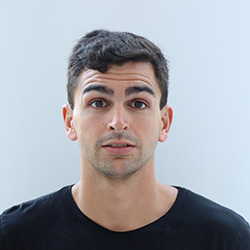
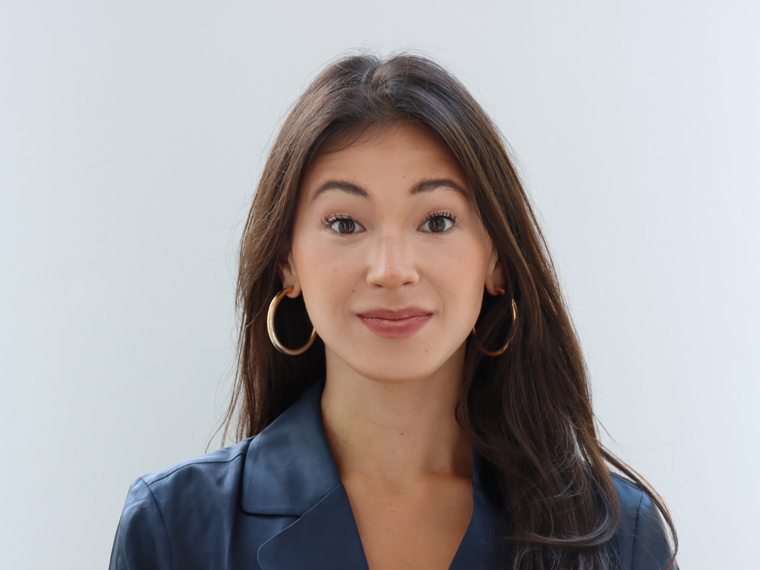
Raise your eyebrows:
Do lines form when you raise them? 2

Furrow your eyebrows:
Do lines form between your eyebrows? 3
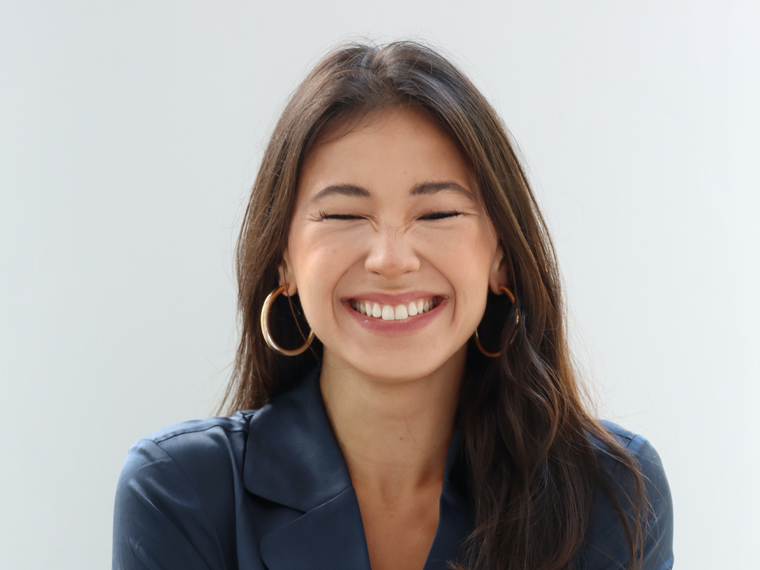
Make an exaggerated s mile:
Do lines form laterally from your eyes? 4
If answer is YES, you likely have dynamic wrinkles and could benefit from Botox to avoide permanent wrinkles. If you have wrinkles, Botox can help prevent them from becoming more pronounced.
- Botox is considered a safe and low risk procedure
- When performed by trained professionals side effects are rare. The most common side effects include swelling / redness at the injection site and minimal bruising (<5%)
- Botox has been used for non-cosmetic treatments regularly since the 80’s so it’s long-term side effect profile has been studied excessively (over 3,000 papers). It was approved by FDA in 2002 for cosmetic use and designated as safe for long term use
- You may have heard of side effects such as “droopy features” or “frozen face”, these are extremely rare and have to do with providers using larger than needed quantities of Botox, incorrect placement of Botox or Botox migration. Although very uncommon, this does emphasize the importance of selecting a provider who is appropriately qualified and well trained in facial anatomy.
- It is important to select a provider who has both an understanding of facial anatomy and is trained in the “art” of injectables. Providers have to strike the correct balance between looking natural, maximizing efficacy and long-term safety. Qualified providers have improved side effect profiles and tend to operate by the “start early and act conservatively” principle.
- It takes 3-10 days for wrinkle relaxers to take full effect
- Botox can be stopped anytime without the skin looking worse than its pre-Botox condition
- Botox is not physically addictive and when you stop, the normal aging process re-starts
- Wrinkle formation goes back to the way it worked prior to the Botox treatment and muscle movement returns to normal
- Upon stopping Botox your muscles eventually start working as they did before. (There may be lag benefits as you have trained your face to use muscles less, so you slow down the rate of wrinkle formation versus your previous baseline.)
- Muscles and skin do not make up for “lost time” by accelerating the aging process, so regardless of follow up the aging process is delayed
Ok let’s talk walk through what a Botox appointment looks like step by step:
Before:
- The night before limit alcohol, ibuprofen, aspirin and caffeine (these can increase your bruising chances)
During (5-10mins):
- The provider will explain the procedure to you, ask if you have any questions and talk you through the side effects and contraindications
- The provider will clean your face and mark spots with a pen as you make a series of expressions
- The provider will inject the Botox using a very fine needle in the areas market (usually around 30)
After:
- You can leave straight away
- Avoid exercise, sunbathing, sauna for 24 hours (to avoid Botox migration)
Do not put a lot of pressure on your face for 12 hours (to avoid Botox migration). You can put on makeup or creams J
- The injection may sting and cause slight discomfort, but the feeling is fleeting
- A very small needle is used (<0.03inches) and many compare it to a “pinch” and “less painful than laser”. Each pinch lasts a few seconds. There is also a sound the syringe makes – something like crunching boots on snow – so don’t be alarmed
- No downtime is required. You can return to work / university straight after your appointment. You might have little red bumps at injection sites for up to an hour, but these typically disappear within minutes. While bruising may occur, it is rare and temporary
- Typically, providers will advise: no exercise for 12-24 hours, minimize touching injected areas for 12 hours (to avoid spreading), and reduced alcohol / caffeine / ibuprofen or aspirin the night before (to minimize or avoid bruising and swelling)
- There is a huge difference between OTC treatments and prescriptions. OTC creams and serums are NOT classified as drugs so are not required to undergo stringent scientific research to prove effectiveness. The FDA sees them as cosmetic products so doesn’t guarantee reduction in wrinkles that it does for Botox and prescription creams
- Careful of phrasing such as “reduce wrinkles” versus “reduce appearance of wrinkles”
- Here are some things to keep in mind:
| Prescription vitamin A creams | These are proven to be effective in wrinkle reduction. Vitamin A acts on receptors that sit on DNA; it causes an increase in collagen production and a reduction in collagen and elastin breakdown. Over the counter retinol is commonly used but not enough studies to determine whether effective or not, although studies do say it works but has a weaker effect |
| Sunscreen | UV light from the sun causes the breakdown of collagen and elastin. This happens even if you can’t see the sun! SPF helps stop this process; Dermatologists recommend (i) using SPF 30 or more (ii) reapply often (iii) try to choose broad spectrum creams (UVA and UVB protection) |
If Botox is done well, you can’t tell! (yes a cheesy rhyme but it’s true) Your provider has to strike a balance between making you look natural, duration of lasting Botox and long-term effects. Talk to them about this.
- If you do not have dynamic wrinkles!
- Also, contraindications to Botox include but are not limit to: pregnancy, breastfeeding, neuromuscular disorders, feeling unwell, allergies to botulinum toxin products, neurological conditions
Botox in face average cost between 250-800$. We increase transparency around this and will be presenting price by area not units. Units refers to amount of Botox used in a patient. Typically 10-20 units are used in forehead (forehead lines), 10-20 units in frown line (11s) and 6-13 units on each side near your eyes (crow’s feet).
